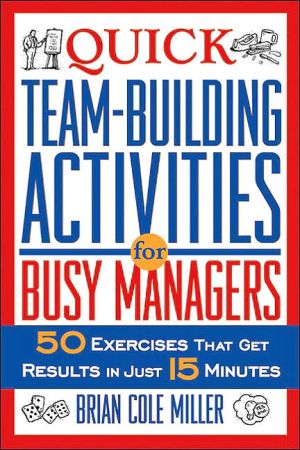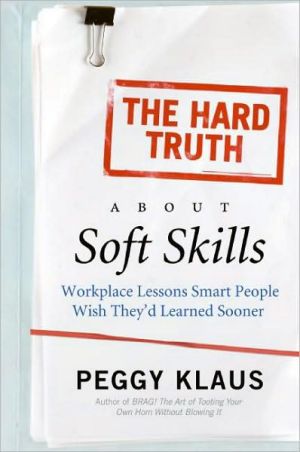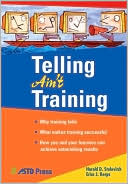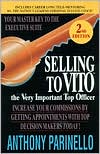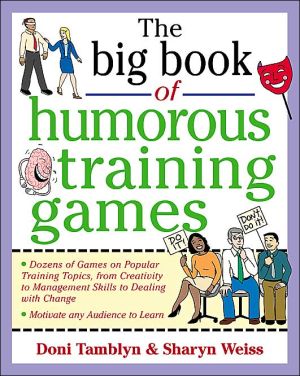Getting to VITO (the Very Important Top Officer): Ten Step's to VITO's Office
The author of the bestseller Selling to VITO returns with a 10-step plan for getting to the Very Important Top Officer's top of mind, top of wallet, and top of their "to-do" list Anthony Parinello's Selling to VITO introduced salespeople everywhere to the Very Important Top Officer-and taught them the precise steps of how to sell to the person with the ultimate veto power. Now, Parinello returns with Getting to VITO, a one-of-a-kind sales resource that offers proven, best-practices advice on...
Search in google:
The author of the bestseller Selling to VITO returns with a 10-step plan for getting to the Very Important Top Officer's top of mind, top of wallet, and top of their "to-do" list Anthony Parinello's Selling to VITO introduced salespeople everywhere to the Very Important Top Officer-and taught them the precise steps of how to sell to the person with the ultimate veto power. Now, Parinello returns with Getting to VITO, a one-of-a-kind sales resource that offers proven, best-practices advice on how-to get into VITO's head, get into their budgets, and get on their team as a "trusted advisor." Based on Parinello's own extensive sales experience-as well as the experiences of the more than one million salespeople who've studied his VITO process-Getting to VITO shows salespeople how to: * Find and pre-qualify the real VITO * Establish real value in VITO's eyes * Cut to the chase with seven different correspondence modalities * Disarm every first-call objection a salesperson may encounter * Deliver the show-stopper "elevator" pitch for every industry * One-on-one coaching from Parinello's own professional coach! Anthony Parinello (San Diego, CA) is the country's foremost expert on selling to top officers. His bestselling book and audiotape program Selling to VITO (The Very Important Top Officer) has sold more than 500,000 copies. Parinello's Secrets of VITO: Think and Sell Like a CEO was a Wall Street Journal bestseller and his most recent book Getting the Second Appointment has been accepted by his following as the new sales process of "choice."
Getting to VITO (The Very Important Top Officer)\ \ By Anthony Parinello \ John Wiley & Sons\ ISBN: 0-471-67519-9 \ \ \ Chapter One\ Setting the Stage\ VITO Principle #1: Everything changes.\ Who is VITO?\ VITO is the Very Important Top Officer-the man or woman who sits at the top of every single one of your target groups of prospects and customers who has the ultimate authority to make your sale materialize or disappear.\ If VITO doesn't want to buy your stuff, the sale is not going to happen, no matter how many purchasing peons, interns, or technical experts say it's a great idea. Ever had a "sure thing" sale evaporate mysteriously? Five will get you ten that VITO, whom you never met, happened to mention to someone that what you were offering didn't seem like a great idea. Whoosh. You went from the hot new thing to radioactive in 10 seconds.\ If VITO does want to buy your stuff, then the sale is going to happen, no matter how many senior VPs, entrenched suppliers, or relatives of the current vendor think it's a dumb idea to buy from you.\ You want VITO on your side. This book is about getting VITO on your side.\ * * *\ I've spent a good many years writing articles and books, creating audio programs, building e-learning lessons, and teaching and coaching salespeople how to get appointments with VITO-the person who has the ultimate veto power. And over the years, like everything else in this universe, the process has changed.\ Why? VITO haschanged. Levels of authority continue to migrate upward within the enterprise. The tougher regulatory and legal environment of the last few years has made VITO more cautious. When people at the top exercise caution, they typically delegate and empower others in an effort to mitigate risk.\ So I'll share with you, right now, the big lesson I've learned about VITO since I wrote my first book. It is this: Contrary to popular opinion (and my own assessment in the early 1990s), today's VITOs aren't really risk takers.\ Actually, by the time VITO approves a decision-either through empowerment, delegation, or (gasp!) taking direction from individuals lower down and higher up in the executive ranks of VITO Inc.-the "risk" has typically become nonexistent. The decision turns into a well-informed strategic choice, one that puts someone else's neck on the line. (Or, better yet, a bunch of someone elses'.)\ I realize that there are dangers in any generalization, and I know that what I've just described is not the way all VITOs operate these days. But it is an increasingly common pattern in today's business environment, and it seems likely to me-given some of the challenges faced by a number of visible "hard-charging" executives who really were serious risk takers-to remain a common pattern in years to come.\ DON'T KILL THE MESSENGER!\ You're not going to like the facts of selling life that you're about to read. Just remember that I am on your side, and when you get to the end of this chapter I will still be on your side.\ Ready? Here are six things you need to acknowledge about your selling career.\ 1. Right now, your sales cycle is, in all likelihood, about 50% longer than it can and should be.\ 2. You've been lied to repeatedly by the decision makers you've been dealing with for lo these many years. They've told you that they have the authority to say No to the vendors they deal with. They really don't have this power.\ 3. You've been selling to individuals who don't like to be sold to. 4. You've been annoying the hell out of them in the process.\ 5. Whether you realize it now or not, every VITO has a VITO. 6. If you want to sell to a VITO, you have to think like a VITO.\ Let's look at each of these in depth.\ THING YOU NEED TO ACKNOWLEDGE ABOUT YOUR SELLING CAREER #1:\ Your Sales Cycle Is 50% Longer than It Should Be.\ I know, I know. The threadbare phrase "time is money" has been beaten into your skull for years. But is that any reason to ignore it?\ The cost of a person-to-person "sales call" continues to rise in too many of today's sales organizations. Many sales managers still insist on getting salespeople to focus on "activity"-and not on results. In startling numbers, lines of business executives (like VPs of sales) are watching their ROS (return on sales) dwindle.\ And guess what? While all of this is happening, you and your contemporaries are, in all likelihood, using tactics that are actually lengthening rather than shortening your sales cycle! That means you're making these already lousy numbers worse, not better!\ Dubious? Don't be. In the pages that follow, you'll learn what the (all-too-common) problems are and how to turn them around.\ THING YOU NEED TO ACKNOWLEDGE ABOUT YOUR SELLING CAREER # 2:\ You've Been Lied to: Decision Makers Really Cannot Say No.\ There are, by my count, five important players in each and every account that you and I sell to. For now, I want to focus on the role of just one of these players: the Decision Maker, or DM.\ Fact Number One\ The DMs' job is to say Yes. They have to. It's in their job description.\ They have a need to fill, a job to do, and they need the help of "business partners" to do it. Keep in mind, then, that whenever you get what sounds like a No from a DM, that means that they have said Yes to someone else, like your competition. I know that's not cool, but that's the way it is.\ Fact Number Two\ In the not-so-distant past (like, say, within the last 12 to 24 months) a few players changed their roles in your prospects' and customers' organization. You most likely didn't notice this, mainly because your prospects and customers didn't want you to know anything about it.\ But it happened. DMs grew in numbers. They are now sprinkled all over the enterprise. And they tend to act out a role in our sales process that looks a lot more important than it really is.\ DMs did at one time actually possess the "signature authority" for some pretty substantial numbers. Example: I sell to large Fortune 500 organizations. The VP of sales is typically the person who signs my agreement when I get a "yes" answer. In days past, the VP of sales had decision authority for upwards of $250,000. Today, that same VP in that same Fortune 500 account has a $2,500 authority level.\ Look at it again. Was: a quarter of a million bucks. Is: twenty-five hundred bucks.\ DMs are not about to tell us about this (very important!) trend. So, then, who is making the real decision?\ Consider the following situation.\ Imaginary Case Study\ Ms. VITO Importanta, the CEO of VITO, Inc., wants to capture the Pacific Rim opportunity for her line of wireless products. She's done her own research, and she's confident that her vision and mission will take the competition by surprise and win the market share that she needs to attract round two of investors. Her most trusted line-of-business executive, who has proven his ability to get things done ahead of time and under budget, is her chief operations officer (COO), Mr. Joe Kickass.\ Mr. Kickass is empowered, during a simple one-on-one meeting with Ms. Importanta, to find all of the necessary channels to make this push across the Pacific Ocean a reality. The COO will take all of the tactical steps to make this happen. Ms. Importanta ends her directive with these words: "Kickass, once you've decided on the right suppliers, pass them by me before you sign anything."\ What just took place? Ms. Importanta kept her veto power ... and turned over the risk to Mr. K.\ So here's what the situation looks like to the typical salesperson: Mr. K is the Decision Maker. The buck stops right on his desk. The typical salesperson thinks, "If Kickass says 'No,' I'm out of the game. If Kickass says 'Yes,' I just hit pay dirt."\ Wrong on both counts!\ If you think that the formal Decision Maker (Joe Kickass) is the person who is approving your sale, I have news for you. The numbers show different. The numbers also show that you're going to be surprised during your discussions with Mr. Kickass after he says "yes" to you, and most of the time you are not going to be pleasantly surprised.\ A recent poll of my Selling to VITO alumni indicates that more often than not when a DM says "you're in the running and everything is looking good," your sale is still very much in jeopardy. A whopping 30% of the time the sale is denied. Even if you look at the world with that famous cup-half-full perspective, that means you're only getting seven out of ten deals, when you thought you had ten out of ten. Ouch!\ Who's Who Continues to Change\ The business landscape has changed since I wrote Selling to VITO, and so have the players and their roles. Here's the lineup (from the bottom up) as it appears today, in the twenty-first century:\ Recommenders\ Influencers\ Decision Makers Approvers\ Board members\ Note: In cases where you're selling to an enterprise that does not currently have any board members, not to worry ... your job just got a little easier.\ Empowerment in today's business world works like this: Board members advise and empower Approvers to overaccomplish each and every one of their goals, plans, and objectives, especially year-end shareholder distributions.\ Approvers empower Decision Makers by telling them to sign on the dotted line ... after reporting to the Approver as to what their preferences are.\ Decision Makers empower Influencers by telling them to make the selection and report to the DM as to what their preferences are. But notice this: Influencers invariably interpret, and advertise, this job of theirs as "making the decision," which is not the case.\ Influencers empower Recommenders by asking them to be on a committee to make recommendations, which (as you probably already know) may or may not be considered, or even noticed, by the Influencer.\ Recommenders empower nobody ... unless they happen to occupy one of the other roles at the same time. It is a complex but unavoidable fact of business life in the twenty-first century that people sometimes play two, three, four, or all five of the roles outlined here at the same time!\ Note: It's common in smaller organizations to have one individual playing multiple roles. Keep in mind that lower-level players don't normally play the role of a higher-placed individual, although they would have you think otherwise.\ THING YOU NEED TO ACKNOWLEDGE ABOUT YOUR SELLING CAREER #3:\ You've Been Selling to Individuals Who Don't Like to Be Sold To.\ Consider the case of a salesperson selling human resources (HR) outsourcing. She calls on the head of the HR department. Let's listen in on the call:\ Ima Gogetter, salesperson: "Ms. Skepticala, our organization can reduce your department's direct cost and size by 75% while at the same time guaranteeing compliance with all of the state and federal regulations. Furthermore, our outsourcing team will manage and maintain your department's current workload without the unintentional inefficiencies you're currently experiencing."\ Ms. Reela Skepticala, Head of Human Resources: "Hmmm. Send me some information and I'll get back to you."\ If Ms. Skepticala embraces this "solution," she will be out of a job! Skip this kind of exchange. Follow these three simple rules.\ Rule Number One: Don't waste your time trying to sell to anyone who makes less money than you do. Rule Number Two: Never ask anyone who makes less money than you do to sell for you.\ Rule Number Three: Make your first call to the same titles your own CEO would call.\ THING YOU NEED TO ACKNOWLEDGE ABOUT YOUR SELLING CAREER #4:\ You've Been Annoying the Hell Out of the People You've Been Trying to Sell To.\ If you violate rules one and two, previously outlined, you won't just be wasting your own time. You will be building enemies within the organization you are trying to sell to.\ Don't do it.\ THING YOU NEED TO ACKNOWLEDGE ABOUT YOUR SELLING CAREER #5:\ Every VITO Has a VITO.\ I am going to get into this topic in much greater depth in the pages that follow, but let me make the point here briefly to underline its importance. Every VITO has a VITO.\ VITOs take direction from those individuals who are higher up in the "food chain". While I was writing my Wall Street Journal best-selling book Think and Sell Like a CEO I interviewed over one hundred VITOs. To prepare for this daunting task and to make editing the material as manageable as possible, I created a form with 15 different questions that I would be asking each CEO, president, and owner that I would be interviewing. Everyone that I interviewed had different answers to each question ... with the exception of two questions. Both of these questions were answered in exactly the same way by each VITO I interviewed.\ The first question was:\ Who has the power to interrupt you from your busy day and stop whatever you're doing so that you take their call?\ Here's the answer that always came back:\ One of my board members.\ Food for thought, yes?\ Now, let's look at the second question.\ THING YOU NEED TO ACKNOWLEDGE ABOUT YOUR SELLING CAREER #6:\ If You Want to Sell to VITO, You Have to Think Like VITO.\ Here's the second question that was answered in precisely the same way by every one of the more than 100 VITOs I interviewed:\ What's the single most important aspect of your operation that is critical to your overall success?\ Here's the answer that always came back:\ Following a plan and a process\ I discovered that the most successful VITOS made sure their companies had processes for everything! Finance, manufacturing, marketing, customer service, and yes, even sales. If it mattered to the organization, the most successful top bananas had figured out a way to turn it into a process. Interesting, yes?\ A process, of course, is basically a recipe. It's the proven "what to do" and the reliable "when to do it" of what VITO (or you) plans to carry out. It's the ingredients and the sequence used to create any desired result (like increasing shareholder value or making a sale).\ So here's what you have to understand. The most successful VITOs start with the end in mind, then look for a process that will deliver that goal. They begin by stating what they want as a positive picture for their mind's eye. For instance:\ My goal is to capture the Pacific Rim market for my wireless products.\ Not:\ I don't want to lose market share to my competitors.\ If you stop and think about it, it makes sense for us to state our desired end result in a positive way. This is because the human mind (that includes you, me, and VITO) focuses powerfully on whatever we give it, even when what we focus on contradicts the logical sense of what we think we are asking our mind to do. So, for example, if we tell our mind, "I don't want to lose market share to my competition," guess what outcome our brains are most likely to fixate on? Losing market share! That's what will come back to us. If, on the other hand, we say to ourselves, "My goal is to capture the Pacific market for my wireless products," our mind fixates on the desired outcome: capturing the Pacific market. Phrasing commands and questions in a positive manner is extremely important in running a company, making sales ... and, indeed, in just about every aspect of life you can imagine.\ Here's the payoff: I learned to my astonishment that the vast majority of successful VITOs I was interviewing made a habit of seeing themselves being successful. They habitually visualized positive outcomes, as I've described ... and, as a result, they were much more likely to attain them.\ (Continues...)\ \ \ \ \ Excerpted from Getting to VITO (The Very Important Top Officer) by Anthony Parinello Excerpted by permission.\ All rights reserved. No part of this excerpt may be reproduced or reprinted without permission in writing from the publisher.\ Excerpts are provided by Dial-A-Book Inc. solely for the personal use of visitors to this web site. \ \
Ch. 1Setting the stage5Ch. 2Results and the process that drives them15Ch. 3Value versus values25Ch. 4Your personal value33Ch. 5Will the real VITO please stand up?43Ch. 6VITO's VITO49Ch. 7What you and VITO already have in common57Ch. 8What you and VITO could have in common61Ch. 9What's on VITO's mind?71Ch. 10Prioritize, prioritize, prioritize77Ch. 11Previews of coming attractions89Ch. 12The VITO referral97Ch. 13The nine VITO correspondence elements117Ch. 14The fab five131Ch. 15Wave goodbye to seemore151Ch. 16The voice of power171Ch. 17Six goals for the big phone call179Ch. 18The VITO "elevator pitch"189Ch. 19Allies at the gate201Ch. 20The art of the voice mail message211Ch. 21Ten steps to VITO's office219App. ATemplate of ideal prospects229App. BMeet your coach237App. CThe greatest timesaving tool in the free world245

